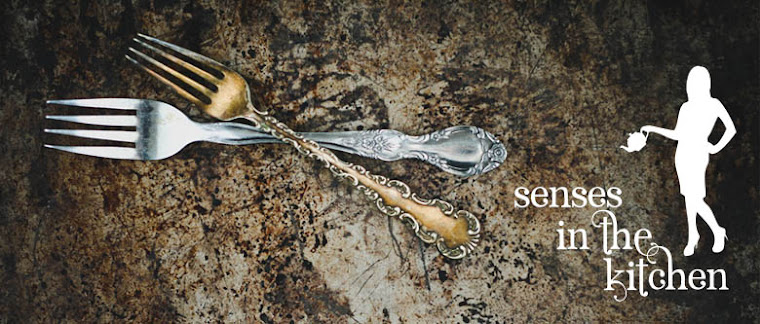Shop bought mayonnaise has been getting
worst for quite some time. It made me wonder why I don't make my own more
often. It is easy to make and the only problem with it is that it has to be
consumed within 5-7 days. I suppose it can be a down side of making my own
every time I fancy some mayo, but on the other hand I don't buy ready cakes made
with dried eggs so why should I compromise on the mayonnaise?
The secret of good mayonnaise are fresh
eggs and using ingredients in a room temperature. You have to be also careful
with adding the oil - just a drop by drop at the beginning and then little bit
more, but still steady!
I remember when I was making my first mayonnaise
using a hand balloon whisker. It was this moment when Mike Robinson, BBC chef
walked into the kitchen. He was around shooting some program about game
in British cuisine and came for a lunch to the pub and restaurant that I use to
work in. He liked it so much, that he decided to come back for a dinner
the same night. And here he was - standing in a front of my while I was mixing
my first mayonnaise. He came to say hello to those who were cooking for him
that night. I often wonder if I would die of a heart attack if it was one of
Roux brothers (or their sons) walking into that kitchen. They are without a
shadow of a doubt the masters of eggs.
The basic recipe I am going to show you
today come from "Eggs" by Roux and what I found very interesting
there was also a recipe for a mayonnaise using whites instead of yolks. It is lower in fat
but this is not what convinced me to make this version of mayonnaise but the
fact that I wasn't leaving any white behind while making classic one.
No leftovers - how nice, I thought and I made both. The one made with whites
was not as stiff as the classic one, I would say it was fluffier. What a great
base to make some flavoured variation! Here they are: two plain and my two
flavoured mayonnaises.
Classic mayonnaise
about 300ml
2 egg yolks
1 tbsp of Dijon mustard
250ml sunflower oil (or other neutral such
as grape seed oil)
2 tbsp white wine vinegar or lemon juice
(or less/more up to your taste)
salt
freshly ground black pepper
Place egg yolks in a large bowl and add the
mustard and some salt and pepper. Using electric hand or stand mixer or just a balloon
whisk mix the yolks with the mustard until well mixed. Next add a drop
of oil and mix all the time. Add next drop of oil only when the previous one is
incorporated into the eggs. Whenthe mixture starts to thicken you may add
little bit more oil at time, mixing all the time. When all oil in mixed into
the eggs beat vigorously for about 30 seconds until the mayonnaise is shiny.
Next add the lemon juice or vinegar and adjust the seasoning.
Refrigerate in a sealed jar and consume
within 5-7 days.
Mayonnaise made with whites
about 300ml
2 egg whites
1 tbsp of Dijon mustard
250ml sunflower oil (or other neutral such
as grape seed oil)
2 tbsp white wine vinegar or lemon juice
(or less/more up to your taste)
salt
freshly ground black pepper
Place egg whites in a large bowl and add
the mustard and some salt and pepper. Using electric hand or stand mixer or
just a balloon whisk mix the whites with the mustard until well mixed and starts to
thicken little bit. Next add a drop of oil and mix all the time. Add next drop
of oil only when the previous one is incorporated into the eggs. When the mixture
starts to thicken you may add little bit more oil at time, mixing all the time.
When all oil in mixed into the whites beat vigorously for about 30 seconds until the mayonnaise is shiny.
Next add the lemon juice or vinegar and adjust the seasoning.
Refrigerate in a sealed jar and consume
within 5-7 days.
Tarragon mayonnaise
about 150ml
half of the classic mayonnaise made with
the recipe above
1 tbsp fresh tarragon, finely chopped
Mix the tarragon into the mayonnaise and
store in a fridge in a jar.
Light mayonnaise with capers and dill
about 150ml
half of the mayonnaise made with whites
(recipe above)
1 tsp salted capers, rinsed
2 tbsp fresh dill, finely chopped
Mix all the above and store in a fridge in
a jar.
Both versions will go very well with eggs,
meat and fish dishes. The one made with whites is almost like a light cold
sauce.
While I am writing about the eggs. I buy
eggs marked 0 or 1 only. Have a look at the photograph below showing you what
quality of life had hens. Let them enjoy life while we enjoy their eggs.















